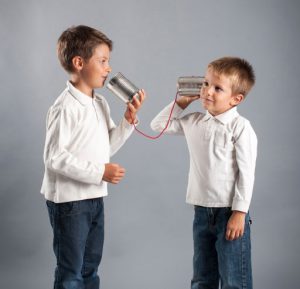 Download a printable copy of this article (PDF 378KB)
Download a printable copy of this article (PDF 378KB)
- Communicate – don’t commentate.
- Use multiple channels, rather than rely on the newsletter.
- Get your key messages into heavy rotation (The Rule of Six).
- Be prepared to bring parents and carers on board slowly.
- Strategise to communicate effectively and prolifically.
Ask any communications expert worth their salt what the rules of effective communication are and they’ll respond with something along the lines of “Communicate, communicate, communicate – even when you’ve got nothing to communicate”. Interpreting this for the school environment provides the imperative to be prolific in our communication first.
Even if you feel there’s nothing to say, there is. There may not be a current and pressing operational situation to convey but that certainly doesn’t mean you have nothing to communicate. In fact, the insistence that your communications are merely a running commentary of the activities in the school, is undermining your fundamental intention for communicating in the first place – to build and leverage the engagement of parents and carers.
“Much unhappiness has come into the world because of bewilderment and things left unsaid.”
– Fyodor Dostyevsky
Communicating is about broadcasting key messages, designed to prompt thought which can then translate into a changed or enhanced behaviour. Readers won’t get very far when school newsletters focus on:
- the list of students who competed in the interschool swimming sports.
- who visited the Ancient Egypt exhibit at the museum.
- who received a weekly Merit Award, especially if we all know or suspect they haven’t done anything meritorious beyond wait for their turn for an award.
- what the school will do to me if I don’t return library books on time.
What is read has zero impact on thoughts or behaviour. This superficial level of communication is commentary at best. It’s time to really communicate – so let’s look at how the communication professionals outside of schools do it.
Radio stations are one media mode that has survived well, despite the obvious challenges, in the digital age. It seems that while we are trapped in cars, there’s a need for radio. Radio stations use the “Rule of Six” to reach us … and to keep us listening.
The Rule of Six is a well tested method that manifests as a new song on the radio seeming to be the only one on the playlist. Of course, the song isn’t on quite such heavy rotation but it seems to be. The radio station is on a mission to have its audience hear this song six times in the shortest period of time possible. After hearing the song six times, we access it in our long-term memories and begin attaching positive memories and experiences to it. This results in us tapping our steering wheels to the song as we motor along and places us certainly in no mood to change the station while our new favourite song is playing. We might even stay for the ads after the song. And what do you know? That’s how radio stations get paid!
Bands who have stood the test of time have been using this to their advantage for years. Their passion is often playing live and this is a highly lucrative passion if you can fill a stadium too. But not all fans purchase expensive concert tickets just because Bon Jovi announces a new world tour. So how do Bon Jovi communicate with us to engage us in the new behaviour of purchasing a $150 concert ticket?
- Announce tour. At this point, the die hard 15% of fans purchase a ticket.
- Have radio stations play old songs that have already made it to our long term memories through the Rule of Six. Another 15% of fans buy a ticket.
- Release a new song and get the Rule of Six working for us. Some new and older fans comprising another 15% buy up.
- Place the new song in new media platforms, like social media. The fans over there now buy. Another 15% of seats are snapped up.
- Give radio/tv interviews in all cities that concerts will play in about three months ahead of time. Another 15%.
- Go crazy hard with print media, posters, billboards and the like to scoop up what they can of the final 25%.
Voila! Full stadium. All it takes is communicating on multiple channels in the right way. Parents and carers won’t all come on board immediately – but you can get them 15% at a time – if you’re as cool about it as Jon Bon Jovi or your own well-known favourite performer or band.


